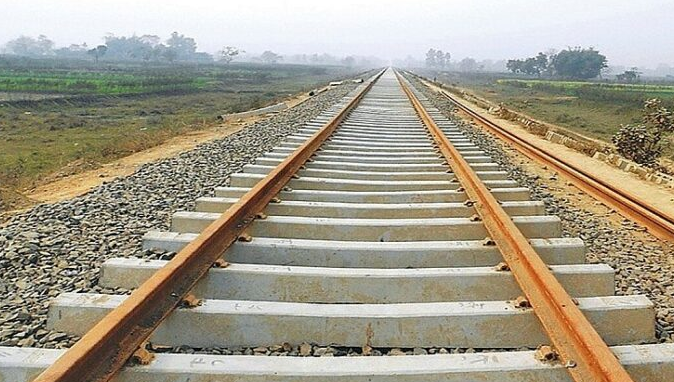Union Cabinet Approves ?24,657 Crore Railway Projects for Connectivity (GS Paper 2, Government Policies)

Introduction
- On August 9, 2024, the Union Cabinet of India approved a groundbreaking investment of ₹24,657 crore for eight new railway projects.
- This substantial funding is earmarked to enhance connectivity across multiple states, increase travel efficiency, and contribute to environmental sustainability by lowering logistics costs and reducing carbon emissions.
- Here’s an in-depth look at these projects, their expected impact, and their alignment with broader infrastructure goals.
Project Overview
- The approved railway projects aim to extend India’s railway network by 900 kilometers, linking 14 districts across seven states: Odisha, Maharashtra, Andhra Pradesh, Jharkhand, Bihar, Telangana, and West Bengal.
- This ambitious expansion is expected to be completed by the fiscal year 2030-31 and is designed to address crucial connectivity gaps in these regions.
Key Railway Line Routes
The eight new railway routes include:
- Gunupur – Therbubali: 73.62 km
- Connecting remote areas to the broader network, potentially boosting local economies.
- Junagarh – Nabrangpur: 116.21 km
- Improving access to key agricultural and industrial regions.
- Badampahar – Kandujhargarh: 82.06 km
- Facilitating smoother transport of goods and passengers.
- Bangriposi – Gorumahisani: 85.60 km
- Enhancing connectivity between important towns and cities.
- Malkangiri – Pandurangapuram: 173.61 km
- Opening up previously isolated regions to economic opportunities.
- Buramara – Chakulia: 59.96 km
- Strengthening connections in eastern India.
- Supporting trade and travel in Maharashtra.
- Bikramshila – Katareah: 26.23 km
- Providing vital links in Bihar.
Logistical Efficiency and Economic Growth
These new railway lines are expected to bring numerous benefits:
- Enhanced Connectivity: By linking previously unconnected areas, the new routes will improve the efficiency of transportation. This enhanced connectivity is anticipated to streamline the supply chain, reduce travel time, and make regional economies more accessible.
- Economic Boost: The construction phase of these projects is projected to generate approximately three crore man-days of direct employment. This will not only provide jobs but also stimulate local economies and contribute to the overall economic growth of the regions.
- Environmental Impact: The projects are expected to have significant environmental benefits. By reducing oil imports by 32.20 crore liters and cutting CO2 emissions by 0.87 million tonnes, the railway expansion will help decrease the carbon footprint of transportation. This reduction in emissions is roughly equivalent to planting 3.5 crore trees, showcasing the projects' commitment to environmental sustainability.
- Support for PM-Gati Shakti: These projects align with the PM-Gati Shakti National Master Plan, which focuses on integrated infrastructure development to improve multi-modal connectivity. The expansion of the railway network supports this initiative by enhancing logistical efficiency and promoting sustainable development.
About PM-Gati Shakti National Master Plan
The PM-Gati Shakti National Master Plan, launched in October 2021, is an ambitious initiative aimed at revolutionizing infrastructure planning and development in India. Key features of the plan include:
- Integrated Planning: The plan integrates 16 ministries to ensure coordinated infrastructure development. By bringing together various stakeholders, it aims to create a more efficient and cohesive approach to infrastructure projects.
- GIS Technology: Geographic Information System (GIS) technology is employed to facilitate smooth coordination and planning. GIS helps in visualizing and analyzing spatial data, which aids in better decision-making and project management.
- Budget and Goals: The PM-Gati Shakti plan has a massive budget of ₹100 lakh crore. Its goals include fostering sustainable development by improving logistics, reducing time and costs, and supporting local industries through enhanced supply chains.
- Synergy with National Infrastructure Pipeline: The plan complements the National Infrastructure Pipeline by providing a comprehensive framework for infrastructure growth. It focuses on integrating different modes of transport and improving overall connectivity.
Interesting Railway Facts
- Highest Railway: The Qinghai-Tibet Railway in China is the highest railway in the world, reaching an altitude of 5,072 meters above sea level
- Konkan Railway: India’s Konkan Railway project features over 147 tunnels, showcasing its engineering complexity.
- Longest Iron Ore Railway: Brazil’s Estrada de Ferro Carajás is one of the longest iron ore railways, stretching 892 kilometers.
- First Railway Project: The earliest recorded railway project began in England in 1604 with wooden wagons, marking the inception of modern rail systems.
- Fast Trains: Japan’s Shinkansen trains, also known as bullet trains, can reach speeds of up to 300 km/h, making them among the fastest trains globally.
- Channel Tunnel: The Channel Tunnel, which connects the UK to France, took seven years to construct and is a remarkable feat of engineering.
- Longest Railway Line: The Trans-Siberian Railway, covering about 9,289 kilometers, is the longest railway line in the world.
- Longest Railway Tunnel: The Gotthard Base Tunnel in Switzerland, measuring 57 km, holds the title of the world’s longest railway tunnel.
- Mumbai Local Trains: Mumbai’s local train system is one of the busiest in the world, carrying over 7.5 million passengers daily.
- First Steam Locomotive: The first steam locomotive, built by George Stephenson in 1814, was a pivotal development in the evolution of railways.
Conclusion
- The Union Cabinet’s approval of the ₹24,657 crore railway projects signifies a major step forward in enhancing India’s railway infrastructure.
- By expanding the network, improving connectivity, and promoting environmental sustainability, these projects are set to drive economic growth and transform regional connectivity.
- They align with the PM-Gati Shakti National Master Plan’s objectives, reflecting the government’s commitment to integrated infrastructure development and sustainable progress.
- As India continues to invest in its transportation infrastructure, these projects will play a crucial role in supporting economic development, improving logistics, and fostering environmental stewardship.


